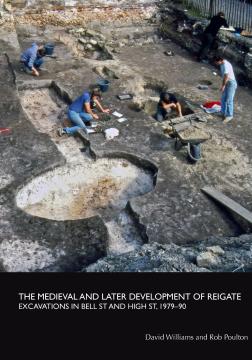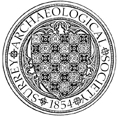
Archaeological work between 1988 and 1990 examined a range of frontage and backlands locations to the south of High St and west of Bell St, the two streets that formed the core of historic Reigate, and provides an unusually comprehensive picture of the development of a small town. The town emerged on a virgin site, and the similarity of the earliest pottery deposited in all locations argues rapid development. This included kilns and other industrial features and a range of buildings with stone foundations, and clear evidence of planning from the definition of burgage plots by ditches. The foundation of the town by Earl Hamelin de Warenne, below the Norman castle, can be shown by place-name and documentary evidence to belong to the period 1164-c1170. This firm dating makes the substantial pottery assemblages of regional importance.
This publication is available from https://www.surreyarchives.org.uk/product-category/the-medieval-and-later-development-of-reigate-excavations-in-bell-st-and-high-st-1979-90-by-david-williams-and-rob-poulton/


